This lemon Basque cheesecake is a super easy and fabulously delicious dessert, that is perfect for making ahead. Enjoy plain or top with fruit or fruit sauce.
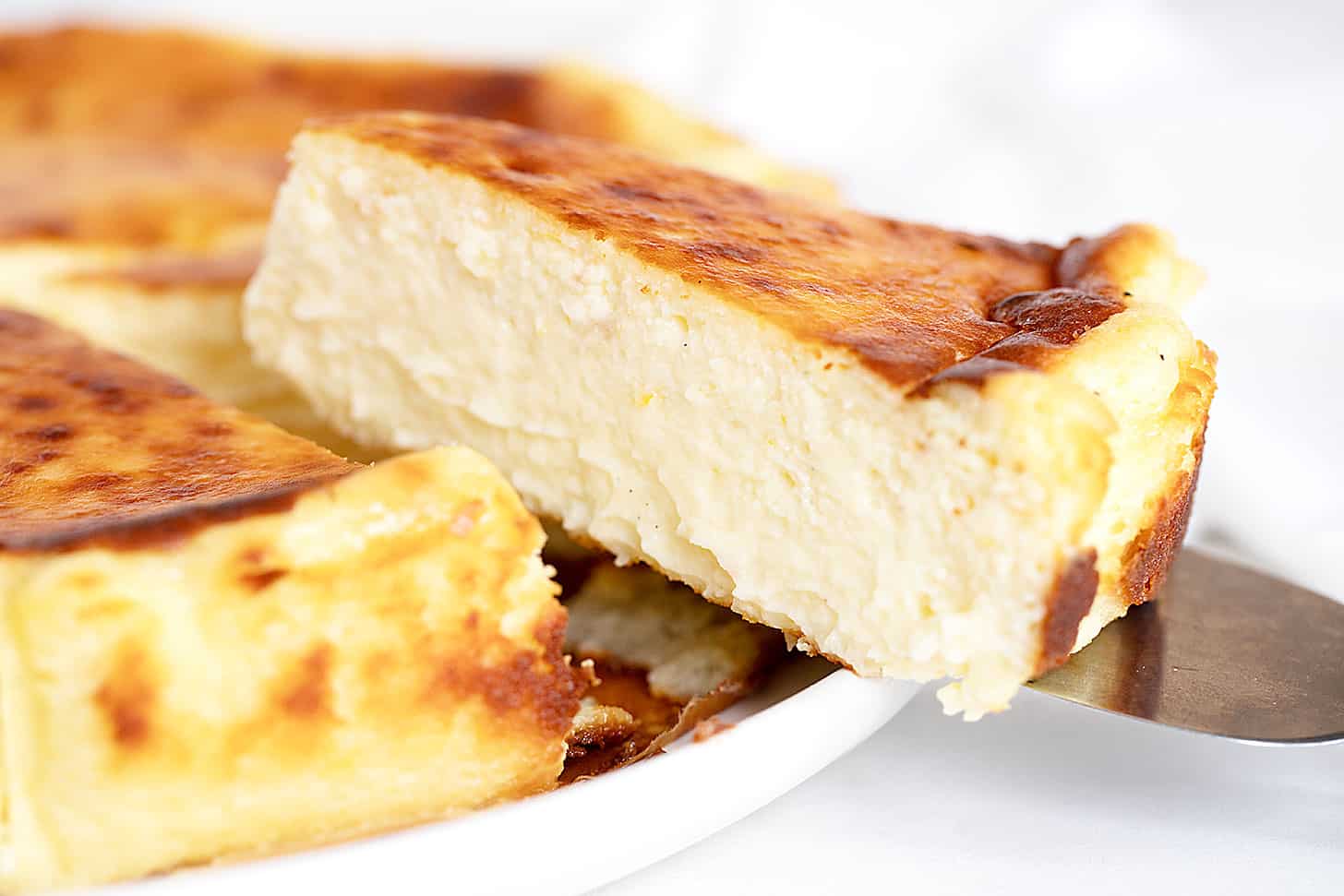
Ingredients and Substitutions
Cream Cheese – You’ll be doing yourself a great disservice if you don’t use full-fat cream cheese for this cheesecake. I highly recommend it. “Light” cream cheese will technically work, but will not produce a lovely rich cake. I don’t recommend whipped cream cheese and I haven’t tested with no-fat or lactose-free cream cheese, so I don’t know how they will perform.
Sugar – The amount of sugar in the recipe will produce a pleasantly sweet cake. You can reduce the sugar a bit, to taste, but don’t do anything drastic, or it will affect the texture and shelf-life of the cake.
Eggs – Large eggs are specified. Here in Canada, large eggs are about 56g. Remember to take the eggs out of the fridge at the same time you take the cream cheese out, so they can come to room temperature.
Heavy Cream – aka whipping cream. Heavy cream is typically 35% butterfat. The higher-fat heavy cream is recommended for the creamiest cake. A lighter cream will affect creaminess and may affect the texture of the finished cake.
Flour – All-purpose (plain) flour is all you need here. The flour can be omitted, but it acts as a stabilizer and if not used, the cake may start to weep as it sits. I haven’t tested with gluten-free flour, though I suspect a one-for-one gluten-free flour might work fine here. Another gluten-free option is to replace the flour with half the amount of cornstarch.
Lemon Zest and Vanilla – Both of these are optional, added only for flavour. I have used Meyer Lemon zest here, but the regular lemon zest is equally lovely. You could also use orange or even grapefruit zest here, if you like.
Step-by-Step Photos
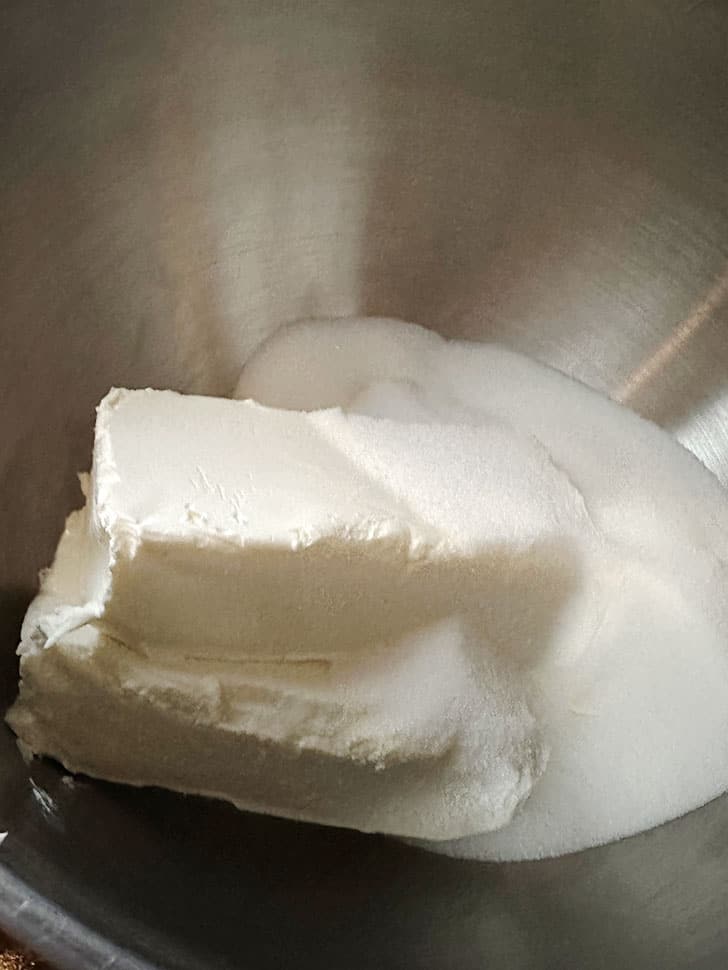
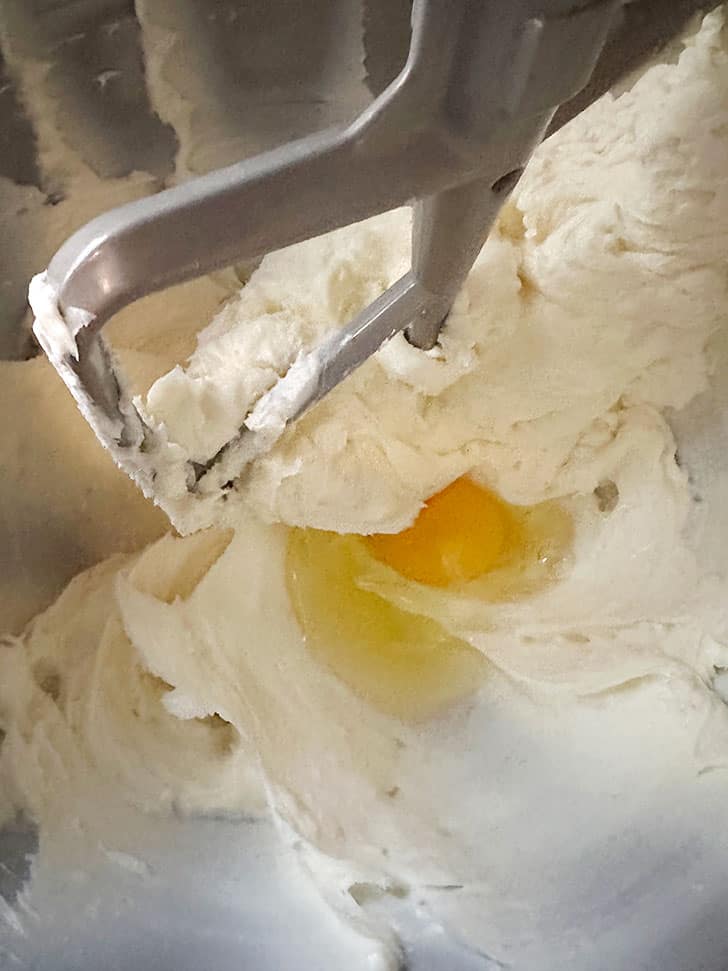
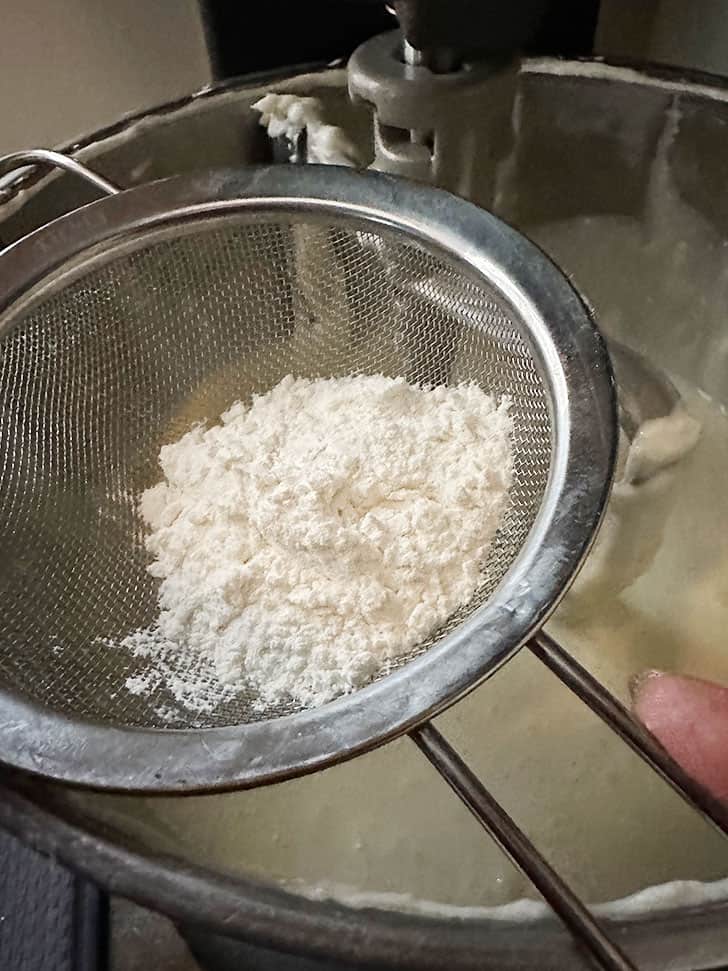



- Add the cream cheese and sugar to a mixing bowl and mix on low speed until smooth.
- Add the eggs one at a time, mixing in at low speed briefly after each addition, then mix in cream.
- Sift in the flour.
- Add the lemon zest and mix on low speed just until incorporated.
- Give the batter a final stir. It should be quite liquid and mostly smooth.
- Pour batter into a parchment-lined springform pan and bake.
Basque Cheesecake Tips!
First, let me assure you that this Basque cheesecake is one of the easiest desserts you can make, but to ensure it is as delicious as possible, here are a few tips to keep in mind …
Mix the Batter Slowly: You can make this cake in a bowl with a spoon and whisk, in a bowl with an electric mixer or in a stand mixer. Whichever method you choose, it is important to only mix at low speed and never beat or whip the mixture, to avoid adding air to the batter. If using a Kitchenaid stand mixer, don’t exceed speed 2.
Don’t Over Mix: In addition to using low speed when mixing, be sure to follow the directions carefully so you don’t over-mix the batter.
Don’t Over Bake: Watch closely in the last part of baking. Ovens will vary and even the colour of your pan can affect the baking time. Start watching the cake after about 35 minutes and test by giving the pan a jiggle.
I’ve learned that I prefer the Basque cheesecake to be creamy and just set, but if I take it out at that point, the top isn’t browned. To counter that, I switch the oven to broil for just a minute or two at the end of cooking, to brown it up.
What to Serve with Basque Cheesecake
This Lemon Basque Cheesecake is lovely enjoyed plain, either chilled or at room temperature. I prefer chilled, myself.
If you’d like to add a topping, any sort of fruit sauce or syrup would be nice, such as blueberry, raspberry, blackberry or strawberry. Fresh fruit also works nicely.

Making Ahead, Storing and Freezing
As Basque cheesecake is best chilled for some period of time after baking, it is perfect for making ahead. The baked cheesecake will keep in the fridge for about 3 days or can be frozen, for up to a month.
Want to save this recipe?
Enter your email and I’ll send it to your inbox. Plus, you’ll get great new recipes from me every week!
By submitting this form, you consent to receive emails from Seasons and Suppers.
You can unsubscribe at any time.

Get the Recipe: Lemon Basque Cheesecake
Ingredients
- 1 1/4 cups (250 g) granulated white sugar
- 24 oz. (750 g) full-fat cream cheese, at room temperature *see Note 1
- Pinch salt
- 4 large eggs, at room temperature
- 1 1/2 cups (350 ml) heavy whipping cream (35% b.f.), at room temperature
- 1/2 teaspoon vanilla or vanilla bean paste, optional
- Zest of 1 lemon, about 2-3 teaspoons (can omit for a plain cheesecake, as well)
- 3 Tablespoons (22 g) all purpose flour
Instructions
- Preheat the oven to 400°F with oven rack in the middle oven position. Grease a 9-inch springform pan (*See Note 2 below for alternate size pans). Cut a large piece of parchment paper and crumple it up into a ball. Smooth it out and use it to line the pan, completely covering the bottom and sides and the pan and overhanging the top by about 2-inches.
- In a large bowl using a handheld mixer or in the bowl of a stand mixer fitted with the paddle attachment, mix together the sugar, cream cheese and a pinch of salt at low speed (not more than Speed 2 on a Kitchenaid mixer) until smooth, scraping down the sides of the bowl a couple of times, about 2 minutes. Add the eggs, one at a time, mixing in at low speed for about 30 seconds after each addition. Add the heavy cream, lemon zest and vanilla, if using and mix in at low speed. With a sifter, add the flour to the mixture and at lowest speed, mix in until just incorporated.
- Pour the batter into the prepared pan and bake for 30-35 minutes or just set. (It will still be jiggly). This can vary from oven to oven and even according to the colour of your springform pan (darker pans cook more quickly), so it helps to have your eye on the cheesecake from 30 minutes forward. The best test for done-ness it to gently jiggle the pan (don't judge by the colour). If the centre is jiggling a lot more than the outside, cook just a little longer. When the cake jiggles as one piece, switch the oven to broil (keeping the cake on the middle rack still) and broil 1-2 minutes until browned nicely. This timing should produce a set, but still creamy cheesecake. If you allow it to cook longer, it loses its creaminess and while still tasty, has a different, less smooth texture.)
- Remove from the oven and cool in the pan to room temperature. The cake will deflate and crack, as it cools. Cover the top of the pan with a sheet of plastic or aluminum wrap and refrigerate at least 4 hours or up to 24 hours before removing from pan, then slicing and serving. Serve chilled or at room temperature.
Notes
More Cheesecake Love!
Hi! I’m Jennifer, a home cook schooled by trial and error and almost 40 years of getting dinner on the table! I love to share my favourite recipes, both old and new, together with lots of tips and tricks to hopefully help make your home cooking enjoyable, stress free, rewarding and of course, delicious!





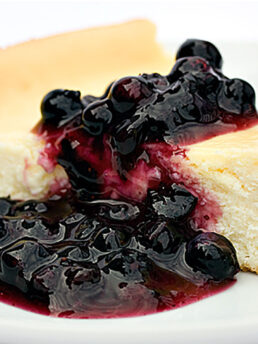

I have made this three times and each time the resulting product is perfect. I bake it until the edges begin to crack and turn slightly brown before broiling. 2 minutes in my oven is perfect.
I’m so glad you are enjoying it Barbara :) Thanks so much!
Hi, Jennifer!
Haven’t commented for quite awhile but use your receipes a LOT! Many are repeats but not many new ones get missed.
This receipe says lemon but you only show lemon zest as optional. No juice? Love cheesecake.
Keep up the fantastic work!
Hi Irene and so glad you are cooking along! And yes, it only uses lemon zest and I find it enough lemon flavour with just the zest. It’s not knock you over lemon, but you definitely know it’s there. So no juice needed. As for the lemon being optional, that is a little confusing. I just wanted to suggest that if you wanted a plain and not lemon version of this cheesecake, you could just omit it. I’ve changed it up to be more clear :)
Do you think I could substitute gluten-free flour for the flour in this recipe?
Hi Martha and I think you could. There’s very little of it and it is only used as a stabilizer. If you try it, let me know how it works!